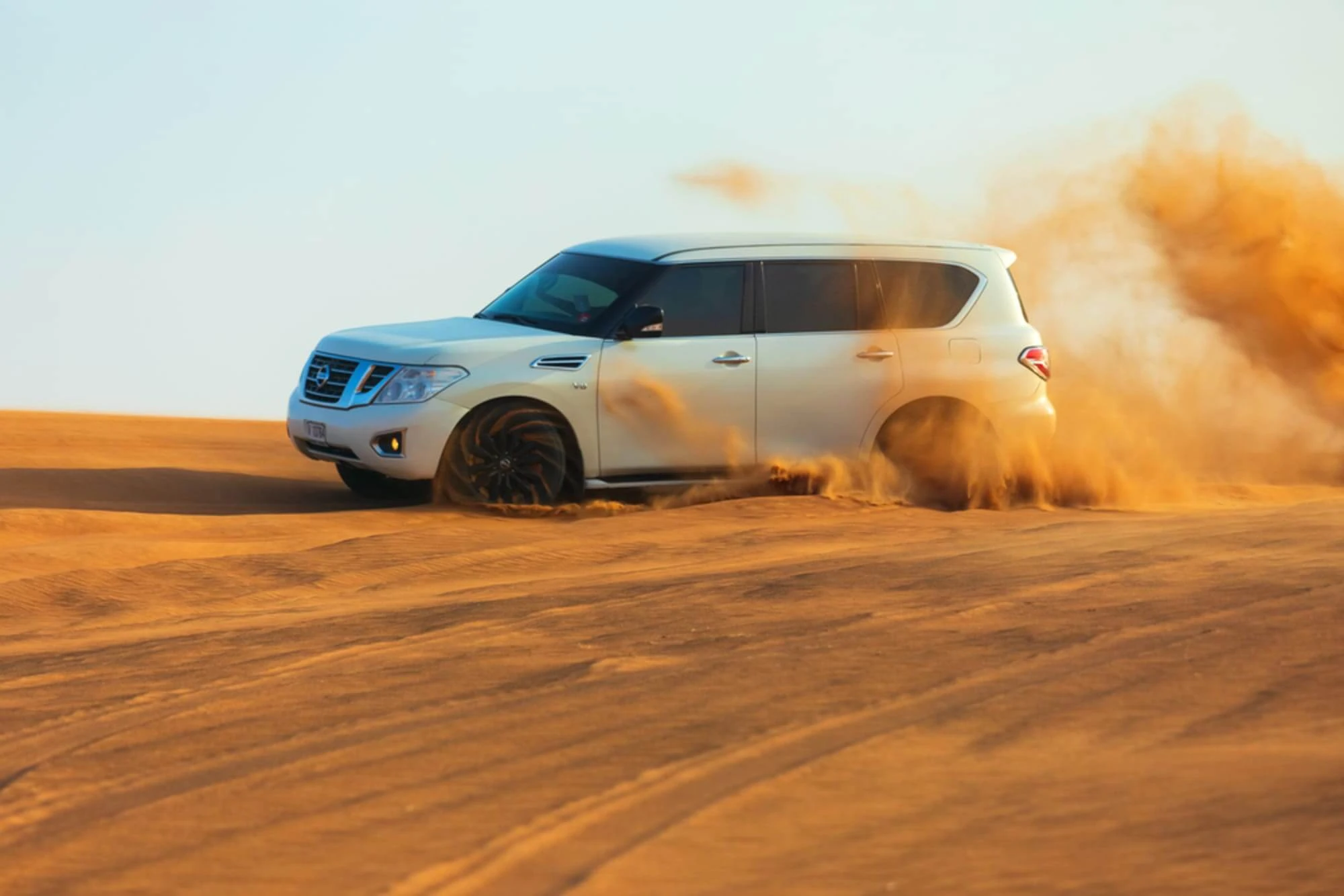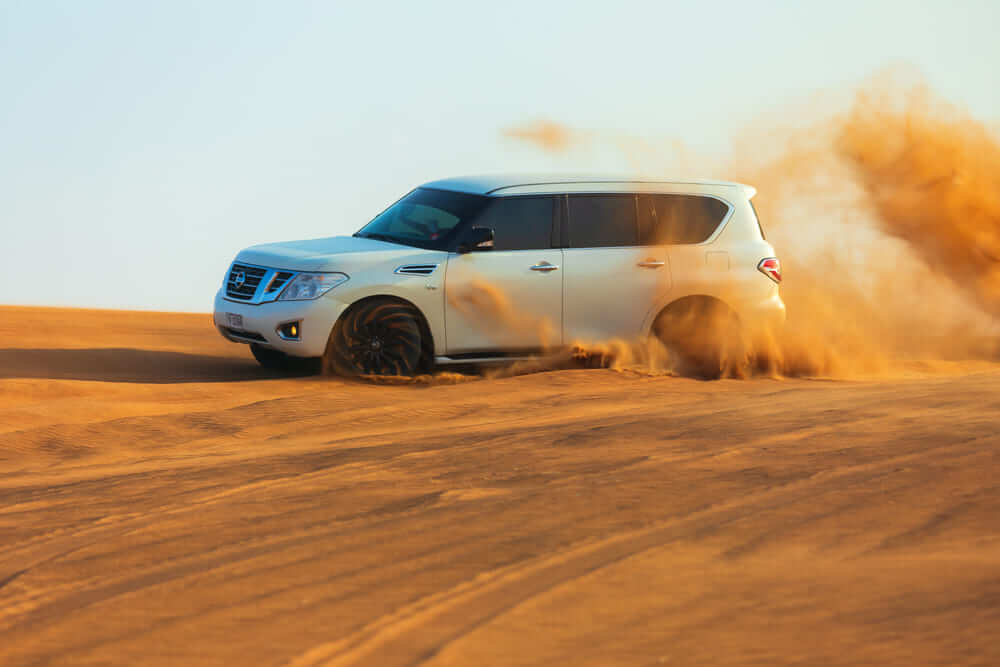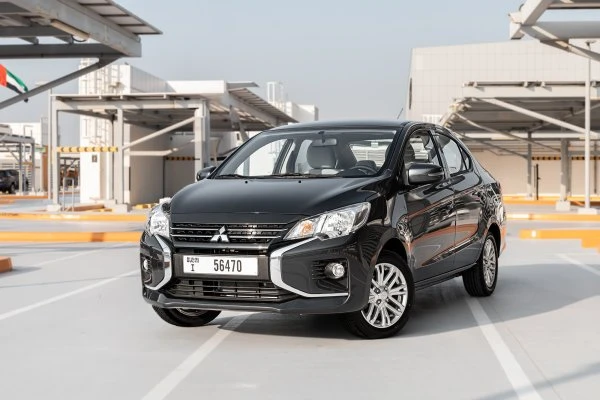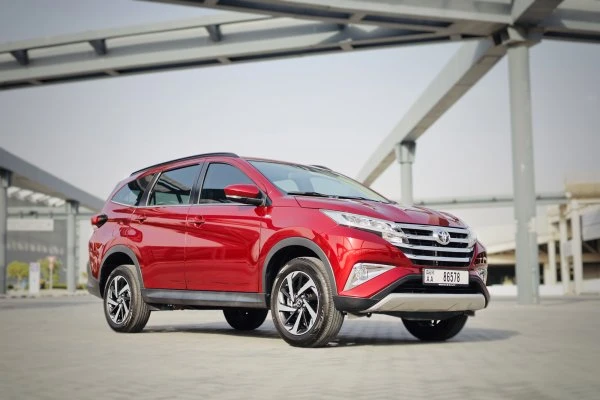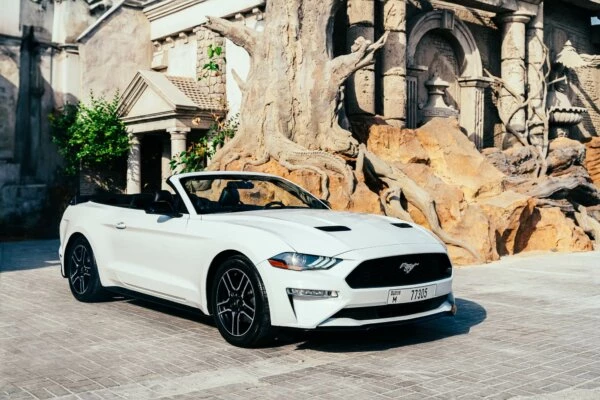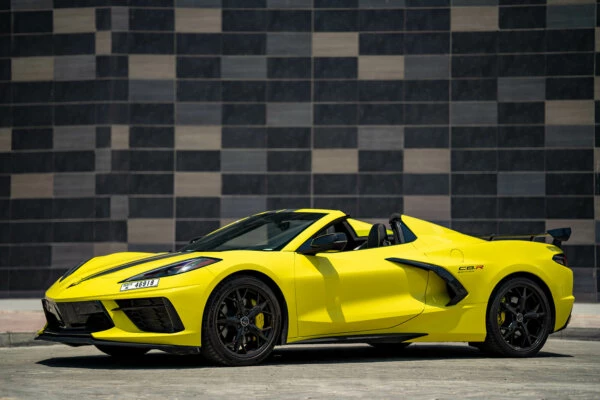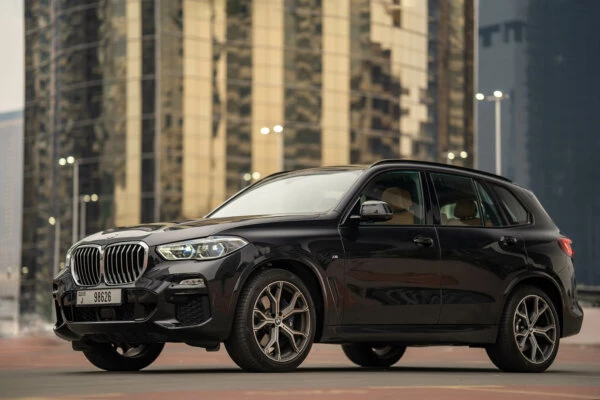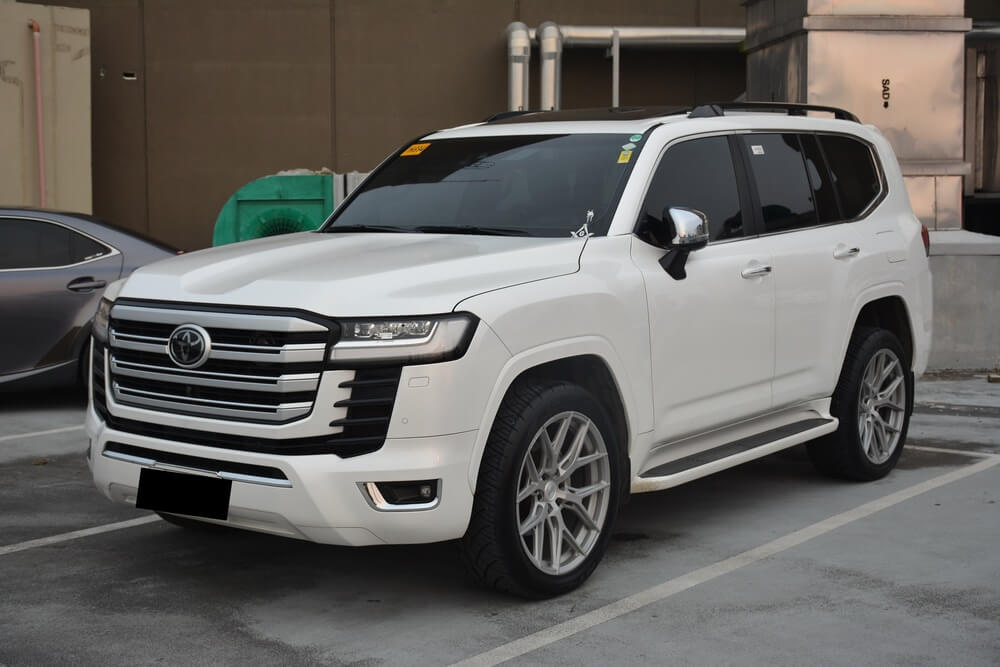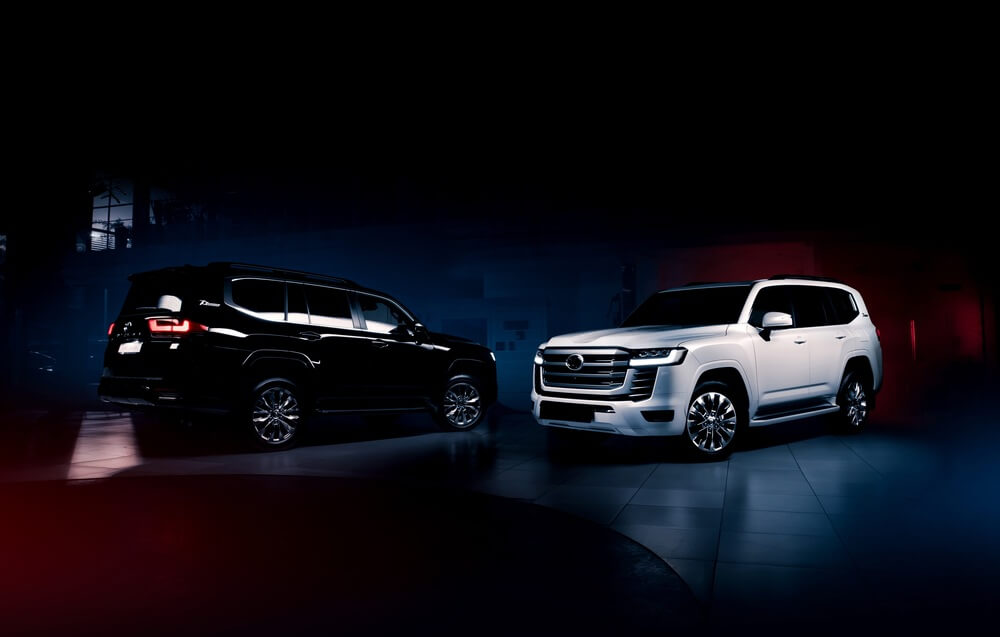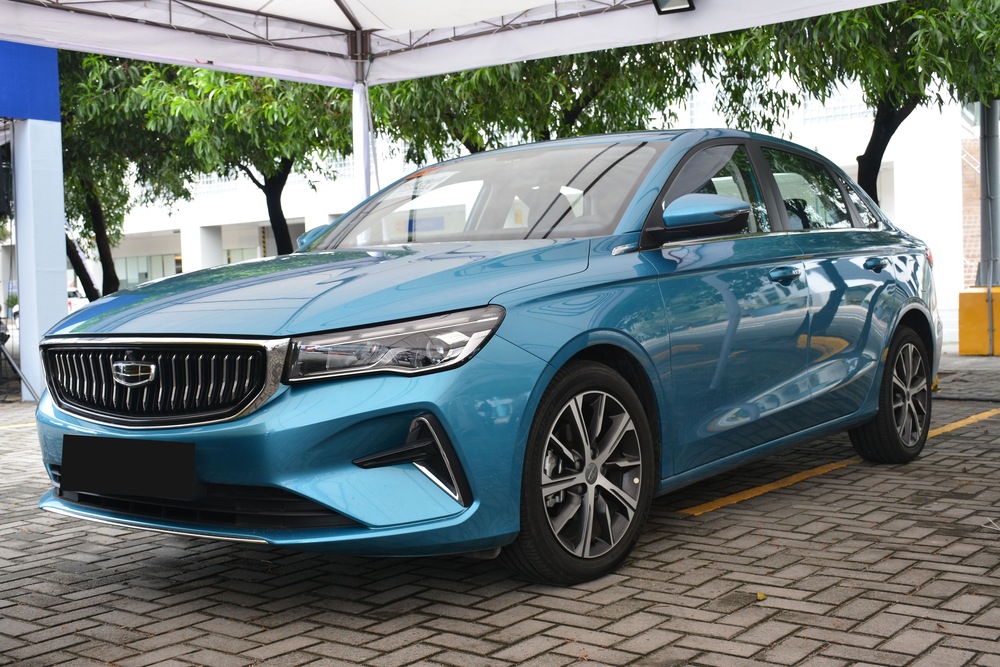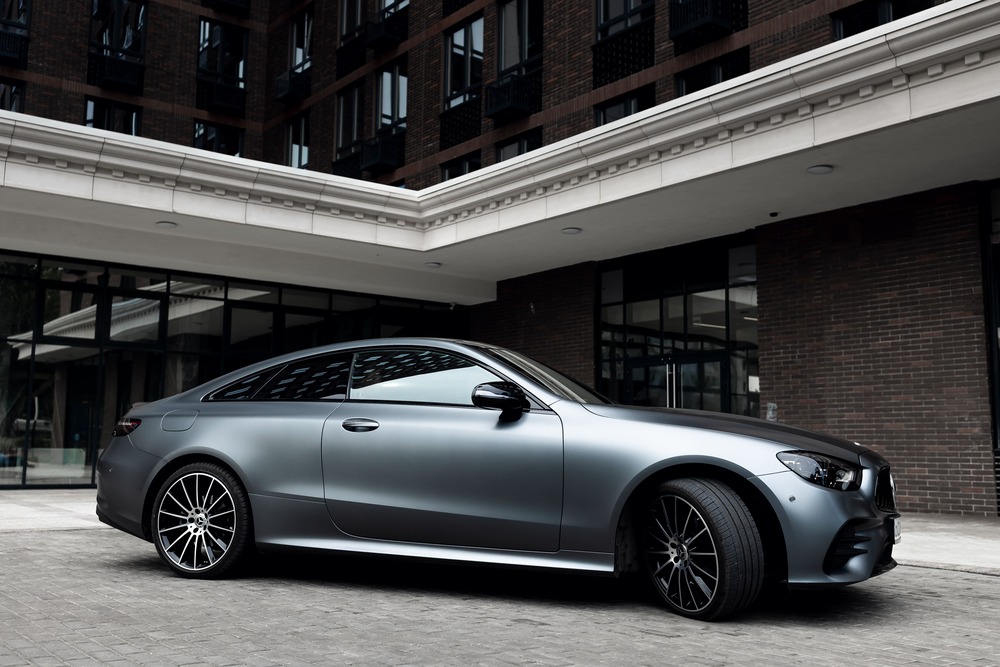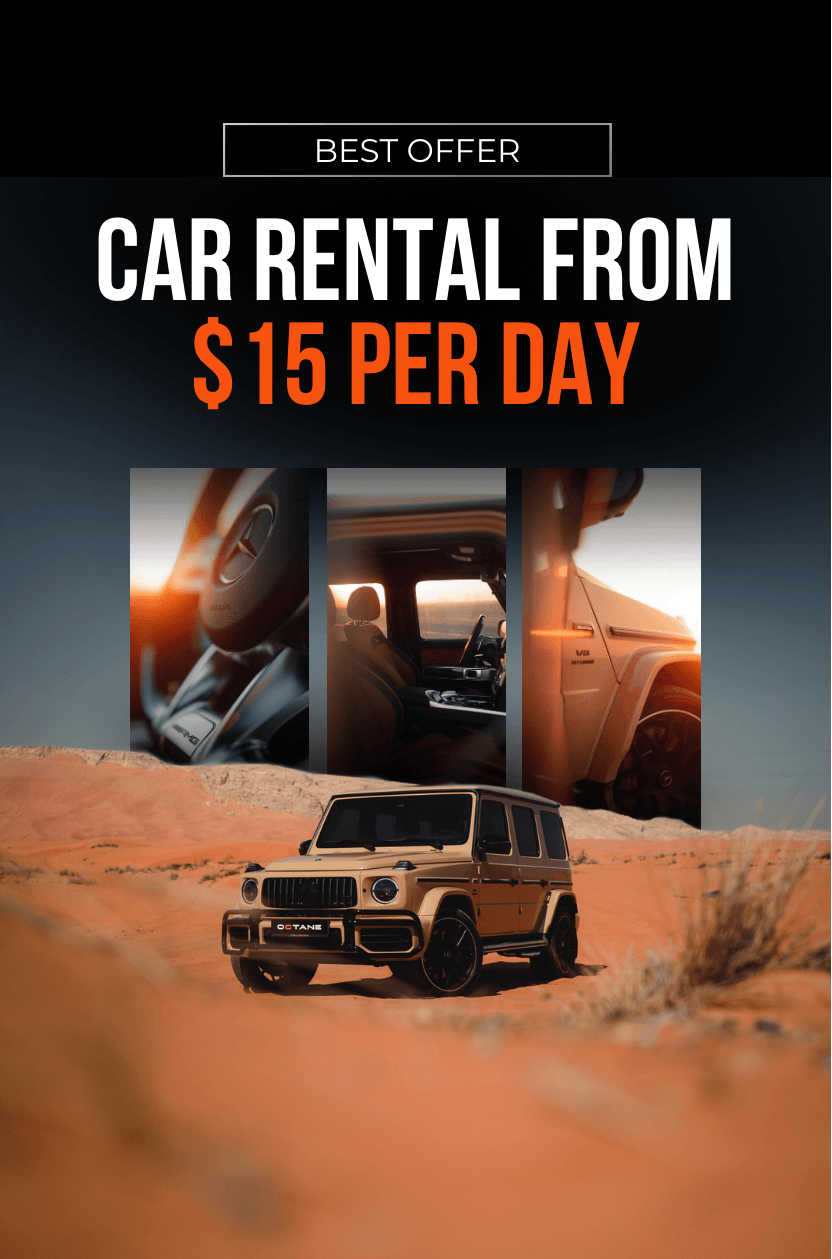Comparing Nissan Patrol vs. Toyota Land Cruiser is a common practice, as these are two excellent SUVs with equal chances of being chosen by those who appreciate spaciousness, a powerful engine, and durability. If you’re looking for a detailed Nissan Patrol or Toyota Land Cruiser comparison, this guide breaks down everything you need to know before making a decision.
Two Full-Size Icons Compared: Nissan Patrol vs Toyota LandCruiser
Why compare these two SUVs and not others? Simply because the Nissan Patrol and Toyota Land Cruiser are legendary in the Middle East. Why they’re constantly compared:
- Both were built to handle extreme conditions, yet the interior space and ride quality are still on top.
- They’re top choices across the GCC (Gulf Cooperation Council) for off-road adventures, dune bashing, and family travel.
- They have established reputations founded on reliability, resale value, and long-term durability.
Both have dominated the roads, deserts, and mountains for decades, and in 2023, they continue to grow with modern upgrades.
- The Toyota Land Cruiser was first introduced in 1951 for the military and explorers worldwide. The latest Land Cruiser 300 Series features a lighter frame, twin-turbo V6 engine, and enhanced electronics. Known for its refined handling and no-nonsense off-road performance.
- Nissan Patrol’s key rival since the 1950s. It holds a Guinness World Record for towing a 170-ton cargo plane in 2013 and offers a naturally aspirated V8 that remains a favorite among performance-focused drivers.
Engine Spec and Performance
Beneath the surface, the Nissan Patrol and Toyota Land Cruiser are different, but both are built to handle rugged terrain and heavy-duty tasks.
- NissanPatrol: Equipped with a 5.6-liter V8 engine, naturally aspirated, it delivers 298kW and 560Nm of torque, smooth power delivery, and dependable acceleration in all conditions. The automatic transmission (7-speed) is tuned for off-road responsiveness and highway comfort. The SUV features Hydraulic Body Motion Control, improving cornering and ride stability. The patrol range also includes a 400-hp NISMO variant, aimed at sportier driving dynamics.
- Toyota Land Cruiser 300: Trades its former V8 for a 3.5-litre twin-turbo V6, boosting efficiency without compromising output. It produces 227kW and an impressive 700Nm of torque, available early in the rev range for confident towing and steep climbs. Comes with a 10-speed automatic transmission, offering smoother gear changes and better fuel economy. A diesel engine option is also available in select regions, designed for long-distance and load-focused performance. Acceleration and driving features vary: The naturally aspirated V8 in the Patrol offers a more traditional feel, with predictable power curves. The twin-turbo system in the Land Cruiser is more responsive at low RPM, providing a snappier throttle.
Regarding the overall impression, the Patrol emphasizes robust straight-line performance; however, the Land Cruiser prioritizes balanced torque distribution across diverse terrains.
- Both SUVs deliver serious off-road capabilities: The Patrol’s hydraulic body motion control enhances comfort on rugged terrain. The Land Cruiser offers better ground clearance, increased chassis rigidity, and more advanced terrain management systems.
In the end, whether you prefer the steady and familiar delivery of Nissan’s naturally aspirated V8 or the early low-end strength of Toyota’s twin-turbo V6, this engine comparison shows why the Patrol vs Land Cruiser 300, 2023 debate remains relevant for serious SUV buyers.
Interior and Comfort
When it comes to interior quality and passenger comfort, both the Nissan Patrol and Toyota Land Cruiser shine, each in its own special way. Let’s review each point.
Cabin materials and display tech:
- The Patrol has a more classic luxury look, with leather-accented surfaces and a bold dashboard layout.
- The Land Cruiser 300 has a more modern cabin, with a digital instrument cluster and a sleek center console layout.
Driver and front passenger comfort:
- The Patrol offers power-adjustable front seats, including an eight-way adjustable driver seat.
- The heated steering wheel feature provides comfort for hands in colder conditions or long highway drives.
- In the front seat area, both SUVs feel spacious with ample headroom.
- The second row is generous in legroom, making long-distance travel with passengers much more pleasant.
- One standout feature in the Patrol is the power-folding third-row seats, which can quickly expand the cargo area at the push of a button.
Climate and ride quietness:
- The four-zone climate control system, found in higher trims of both vehicles, guarantees personalized temperature settings for front and rear occupants.
- On the highway, both offer a high level of noise insulation, although the Patrol feels slightly quieter on rougher surfaces.
Transformation and usability:
- The rear seatbacks fold flat, and the seating configuration allows for flexible loading.
- Despite a slightly higher curb weight, the Patrol maintains interior agility, especially when switching between passenger and cargo use.
In the UAE, where high temperatures and long drives are the norm, features like cabin quietness, seat ventilation, and strong AC systems become necessary. Both SUVs meet those needs, but the overall cabin layout and usability may make a difference depending on driver priorities.
Off-Road Capabilities: Nissan Patrol and Toyota Landcruiser
Their off-road performance characterizes both the Nissan Patrol and the Toyota Land Cruiser. These two full-size SUVs are built to handle dunes and challenging roads.
- Both vehicles come equipped with four-wheel drive systems that are robust enough for extreme terrain. The Patrol’s system offers a multi-mode terrain selector, while the Land Cruiser adds crawl control and off-road turn assist.
- The rear diff lock plays a crucial role in traction. Toyota includes this in most variants, while Nissan integrates its rear differential system with electronic assists for better grip in sand and loose gravel.
The Patrol edges slightly ahead with a more vertical approach angle and higher ride height, making it more confident on sharp uphill roads. However, except the GR Sport, most Land Cruiser trims also deliver strong off-road angles. On dunes, the Patrol’s acceleration response and suspension tuning shine. Drivers in the Middle East often praise Nissan’s off-road stability at high speeds across soft sand.
While the Land Cruiser remains the top choice for many long-distance explorers, some say the Patrol is a more capable vehicle than the LandCruiser when it comes to specific desert conditions.
Technology and Features
Nowadays, it’s challenging to satisfy customers due to the increasing number of car models available on the market. The 2025 Nissan Patrol and Toyota Land Cruiser offer major improvements in technology and safety, meeting changing expectations in the UAE.
Driver Assistance and Safety
- Nissan introduces ProPILOT Assist 2.0, enabling semi-autonomous highway driving, including steering, speed control, and lane changes.
- Toyota’s Toyota Safety Sense 3.0 provides the Land Cruiser with pre-collision systems, blind-spot detection, adaptive cruise control, and multi-terrain monitoring.
- Both SUVs feature front and rear parking sensors, improving precision during tight maneuvers.
- Crash protection includes curtain airbags and multiple supplemental airbags in both models.
- Each model delivers a suite of safety features such as automatic braking, lane keep assist, and more.
Infotainment and Connectivity
- The Patrol now comes with a large central display and supports Apple CarPlay and Android Auto, offering wired and wireless connection options.
- Toyota’s system integrates a 12.3-inch display with optional JBL premium sound, wireless interface options, and configurable Premium navigation.
Comfort Technologies and Onboard Convenience
- Toyota has introduced signature features like onboard AC power inverters and electric power steering in its new hybrid models.
- Nissan integrates rear-view mirrors with high-definition cameras and ambient lighting options throughout the cabin.
Safety Ratings and Brand Legacy
- While the five-star ANCAP safety rating applies specifically to Australian variants, it reflects both models’ rigorous safety engineering.
- The Nissan GT‑R is referenced in Nissan’s marketing as a peer to the Patrol in performance pedigree and engineering culture. Still, the Patrol focuses on off-road and towing strength rather than outright sportiness.
- Patrol safety remains a strong selling point: its advanced driver aids and adaptive controls make it especially fitted to desert driving.
Fuel Efficiency and Maintenance
Fuel consumption is one of the main differences between the Nissan Patrol and the Toyota Land Cruiser. Depending on the variant, the Land Cruiser (especially the 3.3L diesel) is significantly more efficient, averaging 8.9-9.5L/100 km combined. In contrast, the standard Patrol with its 5.6L V8 consumes around 14.4-15.0L/100 km, which can be costly for daily use.

The Patrol generally has slightly higher annual maintenance costs (AED 2,200-3,000) compared to the Land Cruiser (AED 1,800-2,500), but both are built to last. Toyota models tend to be gentler on tyre and brake wear over time. Spare parts for both are widely available in the UAE, with Nissan parts often easier to source quickly.
In terms of long-term ownership or rental, both SUVs perform well in extreme heat. The Patrol’s V8 is reliable and heat-tolerant, while the Land Cruiser’s diesel engine handles extended high-temperature drives efficiently.
Overall, if you’re after lower fuel use and longer intervals between services, Toyota may be the smarter family SUV choice. If you value raw petrol performance and low parts downtime, Nissan holds its ground.
Pricing and Value for Money
In 2025, the Nissan Patrol starts from around AED 210,000 for the base XE trim, while higher trims like the LE Platinum City or NISMO edition can reach up to AED 400,000, depending on selected options and appearance packages. In comparison, the LandCruiser 300 Sahara trim starts closer to AED 325,000, with ZX and GR-Sport models going beyond AED 400,000.
Discounts and dealer offers vary, but Nissan models often come with service packages or cashback incentives. Toyota, while less flexible with discounts, holds a stronger resale appeal across the region. When comparing Nissan vs Toyota LandCruiser 300 Series, the Patrol offers more horsepower for the price, but the Land Cruiser retains its value better over time.
For urban driving, the mid-spec Patrol LE is comfortable and quiet. For large families, the Land Cruiser’s diesel efficiency and cabin practicality stand out. Off-roaders may prefer the GR-Sport variant or the Patrol NISMO, depending on power preference. Both brands deliver excellent long-term value in the UAE market.
Which SUV to Choose in 2025
Choosing between the Nissan Patrol Warrior and the Land Cruiser comes down to individual priorities. Some drivers choose a power-focused driving experience, while others prefer refined comfort and long-standing brand loyalty.
If you’re considering a seven-seat SUV for family use, both vehicles deliver, but the driving experience and cabin ergonomics vary depending on the trim. The 2024 Nissan lineup includes options offering up to 298 kW and 560 Nm, which appeals to performance-focused buyers who also want a capable off-roader.
Meanwhile, the Nissan vs Toyota Land Cruiser comparison usually favors reliability and consistent resale value. In the end, it’s a decision shaped by lifestyle, terrain, and personal priorities: bold performance or dependable reliability.
